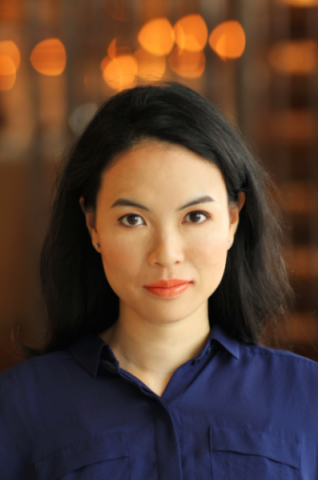“Be brave and honest. Sure, we’re making things up when we write fiction, but the thing that makes me fall in love with a piece is emotional honesty. Whatever scares you—go there.”
Doretta Lau is Room’s 2016 fiction contest judge. Her story “Best Practices for Time Travel” appeared in Room 38.3. In anticipation of our fiction contest, Lau discusses writing short fiction, her influences, and what she looks for in a short story.
AM: Your debut short story collection came out in 2014. Why did you choose to work in the short form?
DL: I did an MFA in fiction and thought it would be easier to improve my craft in workshop by submitting short stories. I wanted to gain mastery on the sentence level before attempting anything longer. Ironically, I took longer to put together a short story collection than most writers spend on a novel.
AM: The story you wrote for Room 38.3, “Best Practices for Time Travel”, is told in a vignette structure, as are some of the stories in How Does a Single Blade of Grass Thank the Sun? When you start writing a new story, do you map out the form beforehand, or does it emerge as you write?
DL: There is usually a spark that drives a story for me. It is either an ending or a sentence or an image. In the case of “Best Practices for Time Travel” the final line came to me early on in the process, so all the vignettes are my attempt to deserve that ending.
I start writing and when I get stuck I do a map on a single sheet of paper. I divide it into thirds: beginning, middle, and end. If I can, I sum up the story in a single sentence. When I was writing my book, I had an index card that read: “Choose a theme, like a cut.” This was a distillation of advice a friend gave me about how to create a sense of cohesion and to have a direction for each story and the overall collection.
AM: Your work is full of local references and conveys a vivid sense of place. How does the constrained space of short fiction influence the way you build the worlds of your stories?
DL: I like the constrained space of short fiction because I loathe writing extraneous detail. In a story, only the important things matter, so I’m forced to select the right references and avoid wasting words. I hate reading lists of actions—unless it’s creepy like “It puts the lotion in the basket.” Often I ask myself how little I can put on the page. I learned to edit this way by watching Diane Williams work on the literary annual NOON, where I served as an editorial assistant.
AM: What do you look for in great short fiction?
DL: I am a sucker for a killer voice. For me, that can carry the narrative really far. I also believe in economy – every word has to count.
AM: Can you think of any short stories in particular that have influenced you?
DL: “When We Were Nearly Young” by Mavis Gallant, Breakfast at Tiffany’s by Truman Capote (this may be considered more of a novella, but I was thinking of it as I wrote the story in my collection called “Robot by the River”), “Everything Ravaged, Everything Burned” by Wells Tower, “Sea Oak” by George Saunders, and “Sweetheart Sorrow” by David Hoon Kim.
AM: Do you have any advice for writers who are thinking about submitting to their first writing contest?
DL: On the practical level: use a 12-point serif font, flush left for your first paragraph and after breaks for a new section, double space, and use a single space after periods. Do not be tempted to shrink the margins to get more words on one page.
I know this advice is boring, but when I see a correctly formatted manuscript, my brain automatically trusts that I’m dealing with a writer who knows what she is doing.
On the intangible level: be brave and honest. Sure, we’re making things up when we write fiction, but the thing that makes me fall in love with a piece is emotional honesty. Whatever scares you—go there.
AM: What are you working on at the moment? When might we see new work from you?
DL: I published a profile on the artist Cao Fei in ArtReview in March.
Last month, I finished writing and recording the text for an art installation by the architect Stephanie Choi. The piece is called “Only Analog is Safe,” which came out of research we did on surveillance, as well as Stephanie’s work on crystals and her graphics and GIFs. It’s showing at the Akademie Schloss Solitude in Germany. Somehow, this propelled me to start writing poetry for the first time since grad school. I’ve mapped out a sci-fi poetry collection that is an extension of this work.
I’m working on a screenplay based on the first story in my collection, so I’m grappling with how to make text messages from the future visually exciting. There’s also a novel, which is a post-colonial crime thriller set in Hong Kong during the Umbrella Revolution.














